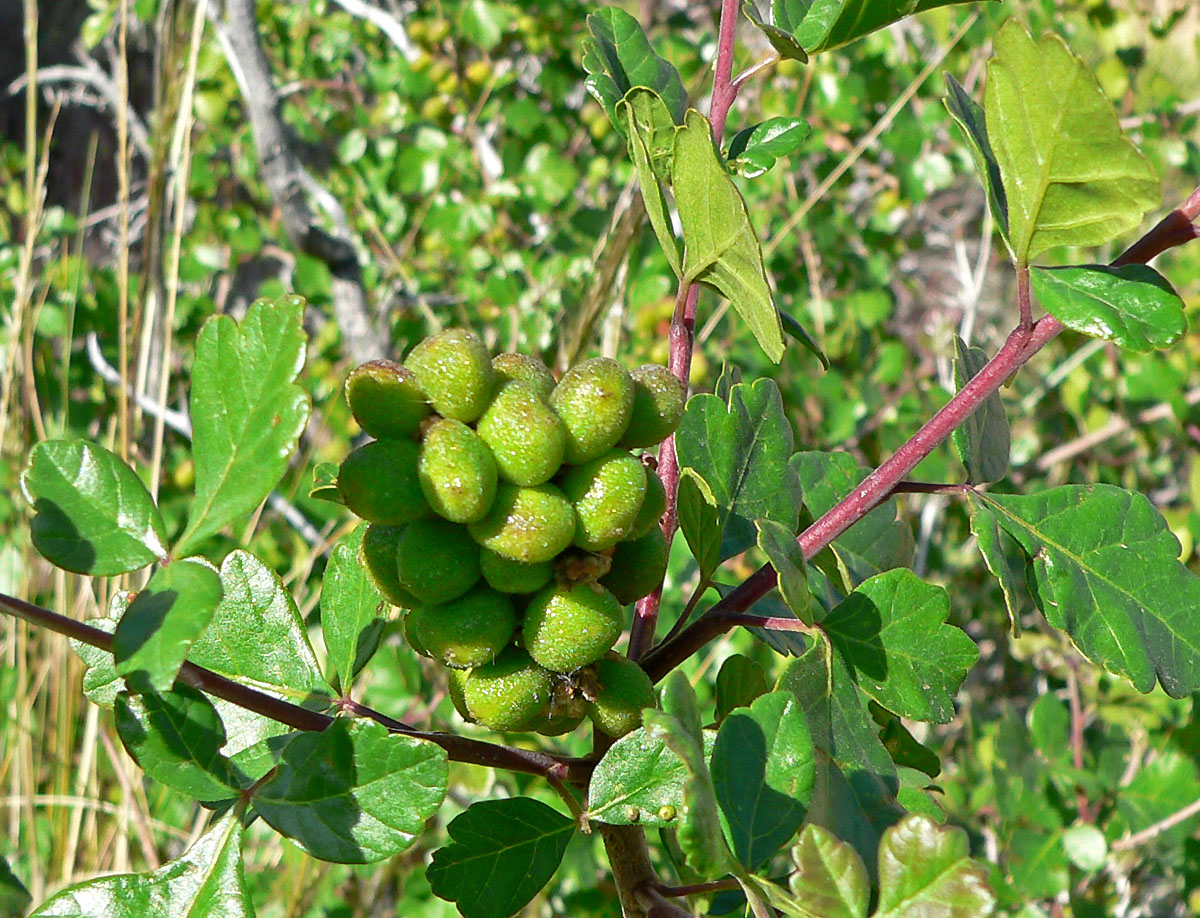- Rhus trilobata
taxobox
name = "Rhus trilobata"
image_caption = Green berries
regnum =Plantae
unranked_divisio =Angiosperms
unranked_classis =Eudicots
unranked_ordo =Rosids
ordo =Sapindales
familia =Anacardiaceae
genus = "Rhus "
species = "R. trilobata"
binomial = "Rhus trilobata"
binomial_authority = Nutt.|The North Americansumac "Rhus trilobata" has the common names sourberry and skunkbush. It is native to the western half of Canada and the United States and extends south into northern Mexico. It can be found from deserts to mountain peaks up to about 7,000 feet in elevation.Skunkbush sumac grows in many types of plant communities, such as the grasslands east of the
Rocky Mountains , mountainous shrubland, pine, juniper, and fir forests, wetlands, oak woodlands, and chaparral. The plant is destroyed above ground bywildfire but rarely killed, and will readily sprout back up in burned areas. It is sometimes planted forerosion control and landscaping, and is a plant used for reclaiming barren land stripped bymining .The foliage has a very strong scent. The aroma is medicinal or bitter, disagreeable enough to some to have gained the plant the name skunkbush. At first glance the plant resembles poison oak due to the three leaflets on each leaf. They are green when new and turn orange and brown in the fall. The twigs are fuzzy when new, and turn sleek with age. They blossom into white or light yellow flowers. The plant yields hairy and slightly sticky red berries which have an aroma similar to limes. The berries are sour but edible. They can be baked into bread or mixed into porridge or soup, or steeped to make a tea or tart beverage similar to lemonade. The acidity comes from tannic and
gallic acid s. The flowers are animal-pollinated and the seeds are dispersed by animals that eat the berries. The shrub also reproduces vegetatively, sending up sprouts several meters away and forming thickets.The skunkbush sumac has historically been used for medicinal and other purposes. The bark has been chewed or brewed into a drink for cold symptoms, the berries eaten for gastrointestinal complaints and toothache, and the leaves and roots boiled and eaten for many complaints. The leaves have also been smoked. The flexible branches were useful and sought after for twisting into basketry and rugs.
External links
* [http://plants.usda.gov/java/profile?symbol=RHTR USDA Plants Profile]
* [http://medplant.nmsu.edu/rhus.html Medicinal plants]
* [http://www.fs.fed.us/database/feis/plants/shrub/rhutri/all.html Forest Service Info Page]References
Casebeer, M. (2004). "Discover California Shrubs". Sonora, California: Hooker Press. ISBN 0-9665463-1-8
Wikimedia Foundation. 2010.
